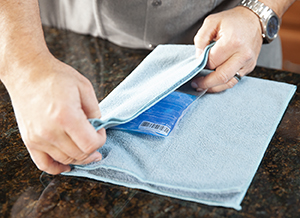Treating Tendonitis of the Foot
A tendon is the thick fibrous cord that joins muscle to bone. Tendons allow joints to move. When a tendon becomes inflamed, it is called tendonitis. There are several tendons in the feet that can become inflamed. They include the Achilles tendon, anterior tibial tendon, posterior tibial tendon, and the peroneal tendons.
Treatment can depend on the location of the tendon and how badly injured it is. Your healthcare provider's first concern is to reduce your symptoms and prevent further injury. Self-care for tendonitis may include the use of ice, medicines, rest, and limiting activity to help control pain and swelling. Follow all of your healthcare provider's instructions. Returning to activity too soon may cause your symptoms to come back. With your healthcare provider’s help, tendonitis can be controlled.
Use ice and heat
Ice or cold packs right after an injury may help to prevent swelling and reduce pain. Wrap a cold pack or bag of ice in a thin cloth or towel. Don't put ice directly on your skin. Place ice on the painful area for 10 to 15 minutes. Repeat the icing several times a day for the first 3 days. If you have had the problem for 3 days or more , using heat may help. Apply a heating pad or hot towels to the tendon for 20 to 30 minutes 2 or 3 times a day or as directed by your healthcare provider.

Take medicines
Your healthcare provider may tell you to take ibuprofen or other anti-inflammatory medicines. These reduce pain and swelling. Take them as directed. Don’t wait until you feel pain. In more severe cases, cortisone may be injected to relieve pain.
Rest and limit activities
First, rest to help reduce pain. Rest also allows the tissues in your foot to heal. Stay off your feet for a few days to weeks. Then slowly work back into activity.
After your period of rest, your healthcare provider may give you exercises to do. These are to stretch and strengthen. Follow-up with your healthcare provider to find out if you need more treatment. If you do high-impact activities, such as running or aerobics, try other activities that place less strain on your foot. Cycling and swimming are good choices.